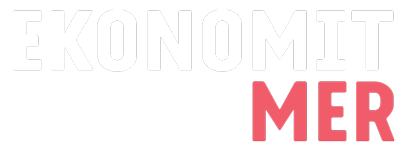When you start drafting your CV, ask yourself first whom are you writing it for and why. You may prefer a personal approach and originality but it’s the recipient who defines the form of your CV. When you have thoroughly researched the industry or organisation of your choice, you understand whether it expects a traditional CV and cover letter or a more personal way to put forward your interests, targets and expertise.
Structure of an effective CV
Contact information
- Name, (address), telephone number, email and a possible link to your LinkedIn profile
- Family status and date and place of birth are not necessary in a CV in Finland, i.e. you don’t have to put ’personal information’ as one of your headlines. Your contact information will do.
Summary
- Explain the reader in brief what your key skills and competencies, experience and strengths are. Elaborate on your future goals: where do you see yourself in the near future?
- Your education
- Add your degree and, in early career, also your major and the title of your thesis.
- You can also add information on your exchange student year or any major projects you’ve been involved in.
Your work experience
- Describe briefly your most recent assignments.
- Don’t forget to mention your responsibilities and achievements in that particular job. You can also add what have you learnt and any positive feedback and recognition you may have received.
- If needed, you can also briefly list your recent employers and mention the industry, basic facts or key figures.
- Change the order of the different sections in your CV on the basis of relevance to the applied job; is your work experience, other experience or education the most relevant?
Positions of trust and other activities
- Describe your positions of trust in the same way as you describe your work experience.
- If you don’t have much work experience, you can put your positions of trust right in the beginning, even before your work experience.
Your language skills and IT skills
- Your grade seems exact but it’s not the best way to describe your skills. Your ’good’ language skills may be ’excellent’ to somebody else. Don’t just mention your grade to describe your language skills.
- Explain how you use your skills in practice, e.g. I use English at work on a daily basis or I have regular contacts with my friends in Sweden.
- Put your most relevant skills first. Your employer is likely to value your SAP or CRM skills more than your Office skills. However, if you’re let’s say an Excel expert, explain how you use it.
List of references
- You may add the names, titles and organisations of 1–3 references at the end of your CV.
- Contact information is usually asked in the interview, so you don’t have to mention it, but remember to refer to it by, e.g. ’I’m happy to provide you with the contact information of my references at request’.
Read more on how a recruiter reads CVs, written by a professional recruiter
7 tips to an outstanding CV
- Familiriase yourself thoroughly with the company and the position
Focus on the applied job when you write your CV. All the information relevant to the position has to be found quickly and easily. - Be yourself
Show your personality on your CV. Use both active voice sentences and lists. You can also put complete sentences in your lists. - Draft more than one CV
If you’re applying for several jobs, draft a few CV templates for different application processes. Change the order of sections in your CV depending on the order of importance of your work experience, other experience or education to your competence in the applied job. - Keep it simple but full of information
Your CV should fit on 1–2 pages but don’t summarise too much at the cost of relevant information. If relevant information takes three pages, then it does. - Don’t expect the reader to read between the lines
Example
You have worked 10 years for the same company and constantly progressed to more demanding tasks. You may imagine that the recruiter sees you as a reliable, efficient and successful employee. Well, not necessarily.
The recruiter only has a moment, maybe just a few seconds, to go through your CV. So be clear and concise with your key experiences, achievements and qualities. Go straight to the point and forget eloquent transitions between sentences or paragraphs. - Have your photo taken by a professional
Always add a picture, the recruiter will remember you easier. A smiling, business-like photo with a neutral background is the safest option. - Check and double-check
Check grammar and spelling, visual appearance and page breaks with extra care. Focus on content. Is the most important information easy to understand at first sight as it is crucial for being invited to an interview?
Read your CV carefully and assess whether it conveys the right image of you; i.e. exactly the expert the employer is looking for. If the answer is yes, congratulations, your CV is ready!
+ A tip from a recruiter
Save you CV as:
Pirtanen Paula CV 1-2017.pdf
If the recruiter saves your CV file, it’s easy to find by your name.
